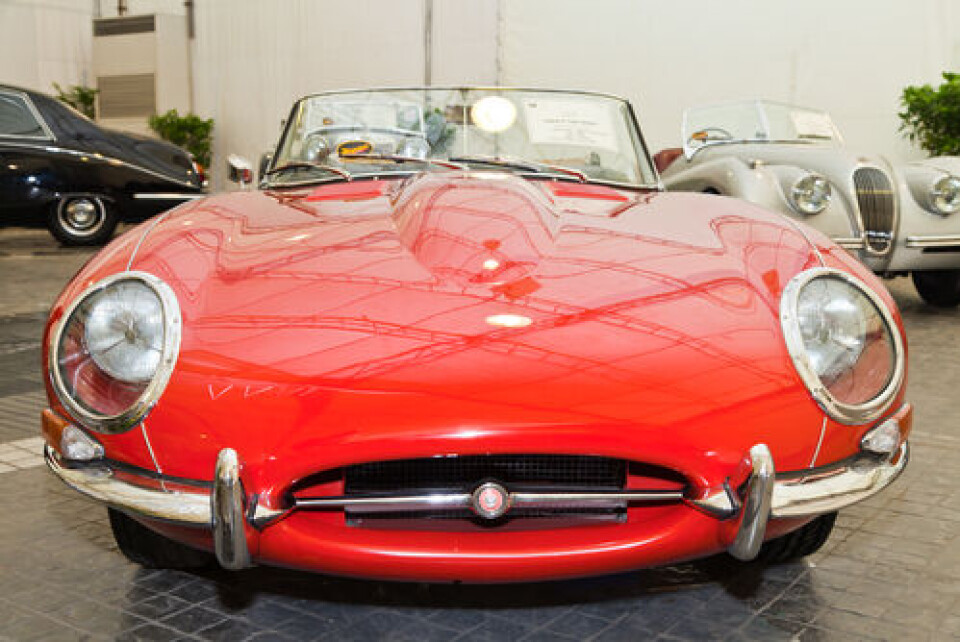-
French mayor fines engine idling motorists: What does the law say?
Is it illegal to keep your motor running when stopped in France?
-
Do drivers still need Crit’Air car pollution stickers in France?
Low-emission zones are set to be removed
-
Is health insurance required to return to visit England from France?
Certain health access remains free at the point of use for all
How do I get a French Crit’Air sticker for foreign classic car?
We look at the urban driving restrictions for the most polluting vehicles and how cars over 30 years old can avoid them

Reader Question: I regularly visit France in my 1964 E-type Jaguar both to go to my house in Auvergne but also to the Le Mans Classic. I assume that this vehicle will qualify as a ‘historic car’ but how do I get one of the special Crit’Air stickers as the car is registered in England.
Crit’Air certificates, which indicate the amount of air pollution a vehicle produces, are increasingly required for drivers in urban areas, whether the car in question is registered in France or abroad.
A growing number of French towns and cities have low-emission zones (zones à faibles émissions or ZFEs) which will eventually only allow access to the least polluting vehicles.
As a general rule, the older the car, the less likely it will be allowed into built-up areas.
Read more: A guide to Crit'Air stickers in France
However, classic cars, which are by definition at least 30 years old, are exempt.
This is because they only represent around 0.5% of the vehicles circulating in French cities, and are normally only used occasionally, meaning that they do not make a significant contribution to overall road emissions.
Drivers with French-registered vehicles can easily show a car’s classic status as it is reflected on their special véhicule de collection carte grise registration document.
Is there a way to reflect a classic car exemption?
It is not currently possible to buy a Crit’Air sticker for a classic car because they are too old to fit the criteria.
At present, checks do not seem consistent and would, if you are unlucky, be handed out in person by a police officer or gendarme, who may well use their discretion if the car is obviously a historic vehicle.
Read more: France to automate low-emission zone checks and fines from 2024
However, drivers will soon need some sort of sticker because cameras capable of checking Crit’Air stickers are to be installed from next year and they will not distinguish classic cars from other vehicles which should be carrying a sticker.
The government has said that it is working on a system to enable classic cars to have their own sticker but this is not yet in place.
It is expected that owners of foreign classic cars will also be able to obtain this.
ZFE low-emission zones are currently in place in Paris, Lyon, Aix-Marseille, Strasbourg, Toulouse, Nice, Montpellier, Grenoble, Reims, Rouen and Saint-Étienne.
In these zones, the most-polluting vehicles can be subject to restrictions at certain times or if air pollution reaches dangerous levels.
Between now and 2025, 43 urban areas with more than 150,000 people will have introduced a ZFE with rules differing depending on decisions made by local authorities.
Crit’Air certificates are round stickers stuck on the lower right-hand side of the windscreen or on the fork below the handlebars on a motorbike.
There are seven categories, from 0, for 100% electric and hydrogen cars, followed by 1 to 5, with a different colour for each. Vehicles made before December 31, 1996, are generally deemed the worst polluters and are non-classé; not eligible for any sticker.
Eventually, only vehicles classified zero (with a green sticker), 1, 2 and in some cases 3 will be allowed into low emission zones.
Almost all types of vehicle are included, whether registered in France or not, and it is possible to order a Crit’air sticker for a foreign car at the official website, by clicking Véhicule immatriculé à l’étranger.
Related articles
Car pollution sticker fraud rising in France: avoid getting caught out
























